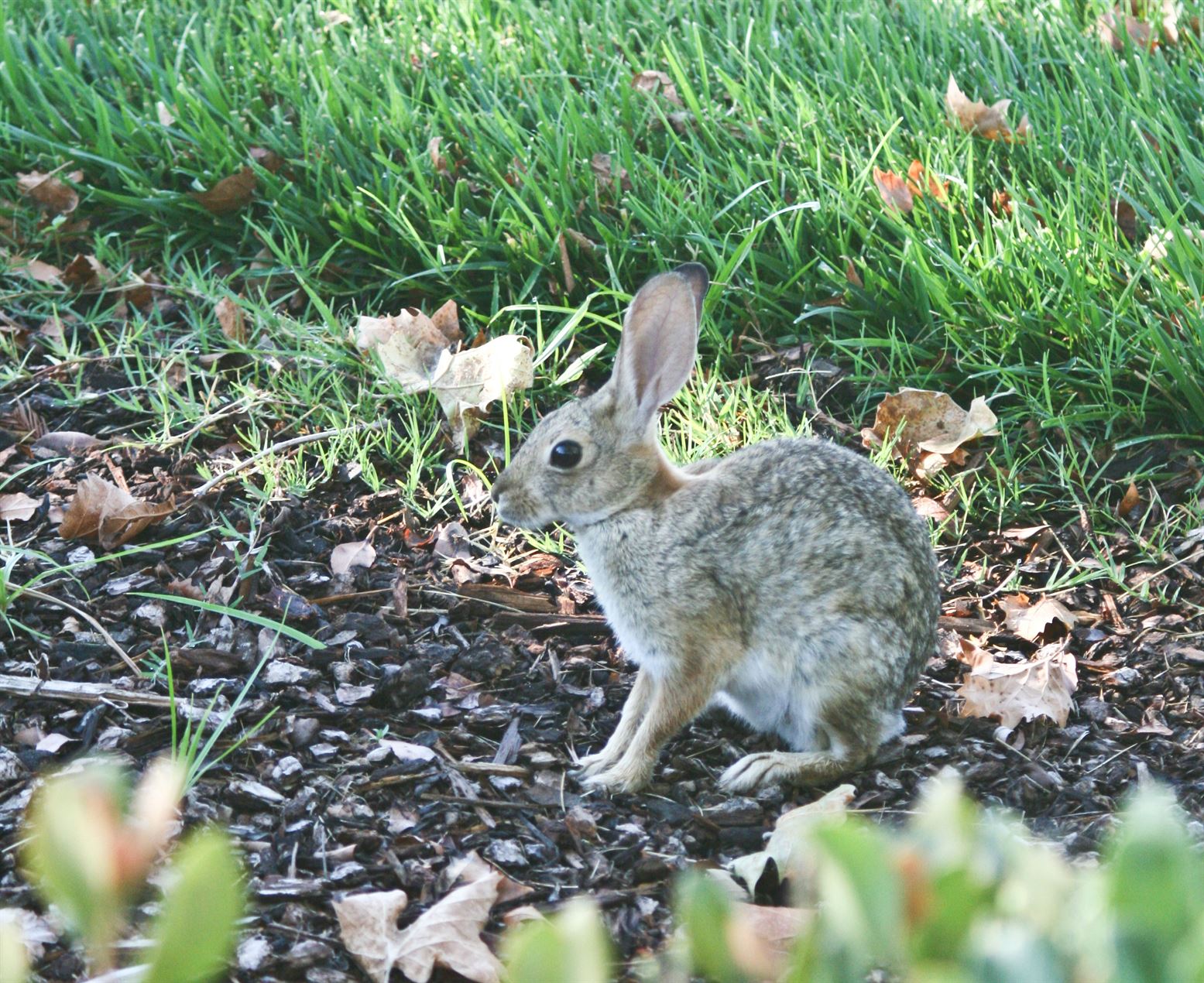
 They sleep in secret, fuzzy beds and have questionable dietary habits. They prefer to be active in the evenings and early mornings. They are easily startled and can, if the situation calls for it, do some damage with their legs.
They sleep in secret, fuzzy beds and have questionable dietary habits. They prefer to be active in the evenings and early mornings. They are easily startled and can, if the situation calls for it, do some damage with their legs.
They are not ninjas, nor are they the freshmen who live in the dorms.
They are the bunnies that live on the UC Merced campus.
Most appear to be desert cottontails, though there could be some black-tailed jackrabbits here, too, said Bob Timm, c enter director and extension wildlife specialist at the University of California Hopland Research & Extension Center. He was unable to make a positive ID of the jackrabbits from photos.
enter director and extension wildlife specialist at the University of California Hopland Research & Extension Center. He was unable to make a positive ID of the jackrabbits from photos.
People have seen the bunnies around campus since before it even opened, and many people find them charming.
“I like them. They are cute,” said engineering grad student Justin Ye. “But I’ve never had contact with them. When you are getting close, they will run away.”
Bunnies approached for this story fled, declining comment.
It appears, anecdotally, their population has dropped off since the campus opened in 2005, said UC Merced Police Lt. Chou Her.
The bunnies are prey for a variety of other animals that can be found in the area – including bobcats.
As far as Her knows, no rabbits have sneaked into the dorms or been spotted in any other unexpected places.
 “But who would call the police if a bunny got into their dorm anyway? Unless it had broken in to raid your fresh carrot stash,” Her joked. “What we have found is students – especially with each new freshman class – will try to catch them or play with them because, as one student said, ‘the little baby bunnies are just so cute.’”
“But who would call the police if a bunny got into their dorm anyway? Unless it had broken in to raid your fresh carrot stash,” Her joked. “What we have found is students – especially with each new freshman class – will try to catch them or play with them because, as one student said, ‘the little baby bunnies are just so cute.’”
Former student Andrew Sandoval, who works with the campus police department, agreed.
“When I was a student, a couple of my friends and I tried catching one to have as a pet in the dorm rooms,” he said.
The rabbits, even though they are remarkably comfortable with more than 5,000 students around them every day, would have none of that.
Some interesting facts about our fluffy-tailed campus-mates:
 Cottontails are rabbits, while jackrabbits are hares;
Cottontails are rabbits, while jackrabbits are hares;- Cottontails weigh 2 to 3 pounds when fully grown, while jackrabbits can weigh up to 10 pounds;
- Cottontails are social and like to gather in small groups to eat grasses, herbs, vegetables and cactus. They also eat their own feces which, while gross, also fits with the campus’s commitment to sustainability. The rabbits extract every bit of nutrition from their feces, leaving behind anything that doesn’t help them survive;
- Desert rabbits rarely need to drink water;
- Most cottontails live to be less than 2 years old. But they can start breeding at 6 months and can give birth year-round in California. Each female can bear 20 to 30 bunnies over four or five litters in a year;
- A cottontail can run 19 mph, and will often do so, in a zigzag pattern, when frightened. They’ve also been known to “bowl over” a predator and use their powerful back legs to inflict painful kicks;
- Cottontails have been known to swim or climb trees when pursued by predators;
- They sleep in burrows abandoned by other animals, often in areas with heavy brush, and line their nests with fur from their own bellies to keep their babies warm;
- They usually don’t roam far from where they were born;
- The large ears have blood vessels close to the surface, and radiate body heat to keep the rabbits cool. But they are far less active when temperatures reach 80 or higher.
 Though it can surprise you to see one in the flower beds – especially because they blend in with their surroundings – or lounging in the shade under the chancellor’s car in the Library Parking Lot, the rabbits really don’t pose any threat.
Though it can surprise you to see one in the flower beds – especially because they blend in with their surroundings – or lounging in the shade under the chancellor’s car in the Library Parking Lot, the rabbits really don’t pose any threat.
Except on campus roads.
“The hazard is not so much the rabbit but the driver who swerves to avoid hitting a rabbit on the road,” Her said. “This has and could lead to drivers colliding with other vehicles, hitting stationary objects or just driving off the road.”
Sources for bunny facts: Beagles Unlimited; the Arizona-Sonora Desert Museum; Desert USA; Digital-Desert; and UC Agriculture and Natural Resources, a statewide cooperative extension of UC campuses, advisers and specialists.
Lorena Anderson

Senior Writer and Public Information Representative
Office: (209) 228-4406
Mobile: (209) 201-6255






